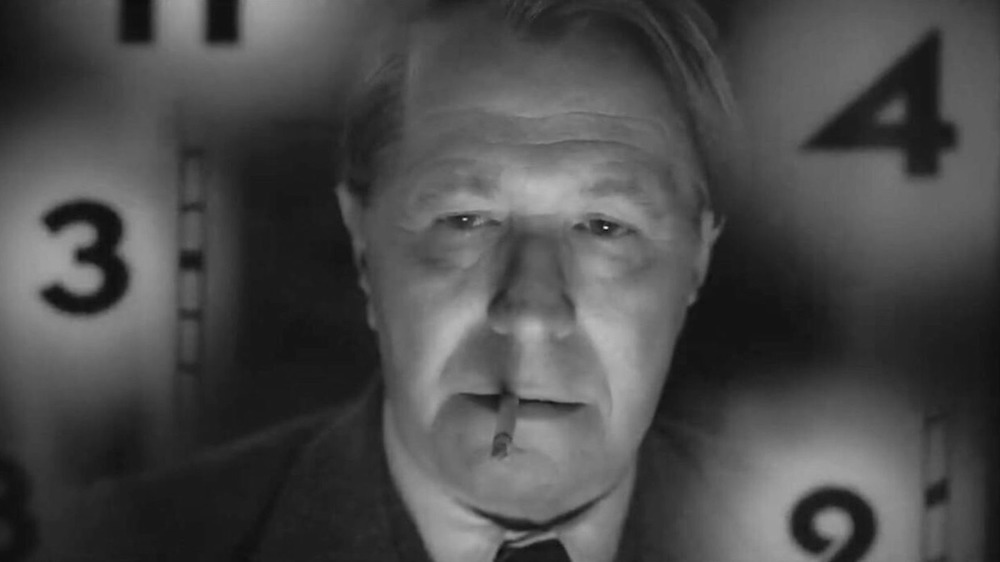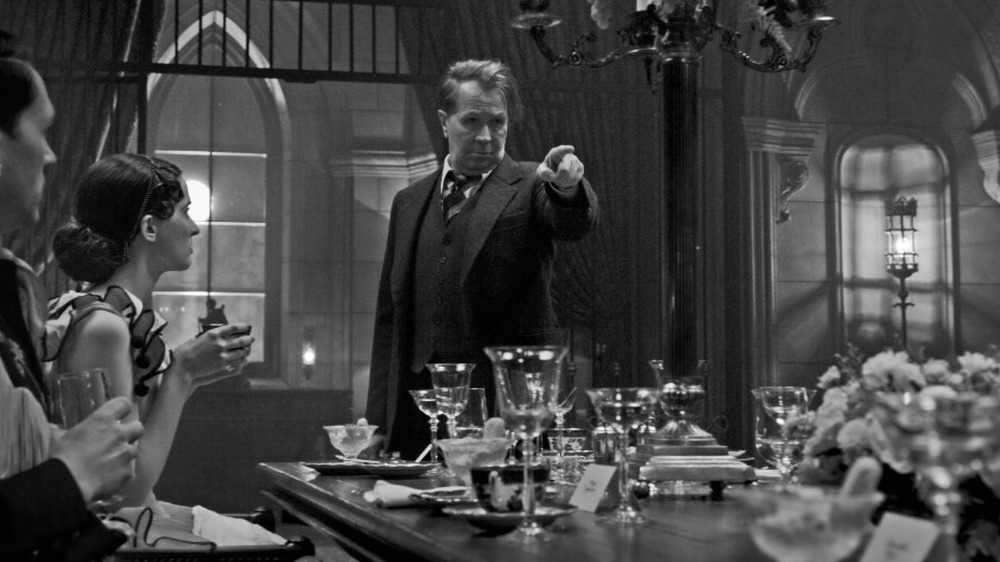The Scene In Mank That Took Over 100 Takes To Film
Over three decades into his career, director David Fincher continues to be dogged by a well-earned reputation for being a cinematic obsessive unafraid to run his actors through the ringer in service of crafting a perfect moment. And while most film lovers would argue the juice is always worth the squeeze for a Fincher film, there are several actors in Hollywood (Jake Gyllenhaal among them) who'd eagerly argue the point. Still, even Fincher's detractors would have to agree his cinematic oeuvre is all but unimpeachable — for instance, Zodiac arguably features Gyllenhaal's best work to date — particularly now that he's 10 feature films in. As for feature number 10, Fincher's incendiary old-Hollywood biopic Mank is already being hailed as another masterpiece from the avowed perfectionist.
And by all accounts, the maestro was up to his exacting antics throughout the film's production.
That sort of makes sense for Mank, however, as it details the writing of one of the most influential and meticulously crafted films in the history of cinema: Orson Welles' 1941 masterwork Citizen Kane. That film was, of course, scripted by boozy Hollywood roustabout Herman J. Mankiewicz, who's brilliantly portrayed by Gary Oldman in the film. In a recent Deadline interview promoting Mank, Oldman candidly spoke about Fincher's process, and also addressed the rumor that Fincher called "action" on over 100 takes for the film's infamous dinner scene.
"It isn't 100 takes to get the performance. He's shooting different setups. 10 takes here, 15 takes there. You're there even doing the performance off-camera because there are all those eye-lines. So, we shot it over five days and I don't know, but I think it probably was 100-plus. And David doesn't like to do pickups, so you do the scene from the top all the way through, every time."
The dinner scene in Mank was a grueling, but rewarding affair for star Gary Oldman
For those who haven't seen Mank, that party scene comes late in the action, and finds the sloppily drunk writer crashing a dinner gathering at the mansion of his filthy-rich pal William Randolph Hearst (Game of Thrones alum Charles Dance), whose life Mankiewicz would barely fictionalize in his scathing Citizen Kane narrative. The moment is opulent in the way only an old school Hollywood shindig could be, and the scene eventually finds Mank himself skewering Hearst and his costumed companions for their utter lack of integrity before being unceremoniously knocked off his high horse in truly epic fashion.
Frankly, the scene itself is so big, and so vital to the overarching story being told, one can hardly blame Fincher for taking his time and making sure everyone got it right. They did, by the way. And while Oldman admits it was a tough shoot, he also claims Fincher's approach is why it all worked.
"He does like to double-down, but he knows what he wants. It's better to go into work and walk away at the end of the day knowing you've got it, than to work for someone who settles. With David, you've exhausted it, and you know he won't walk away unless he's satisfied." From there, Oldman continue his Fincher praise, stating that "it's a luxury to be able to come and really work a scene. If he wants to do 60 takes, let him do 60 takes. If he wants to do 230 takes, he can do 230 f—ing takes. Life could be a lot bloody worse than coming in and doing 100 takes on the set of Mank."
It's safe to say that final statement will ring truer than ever should Mank earn Oldman and Fincher the awards season glory that many insiders expect it will.

